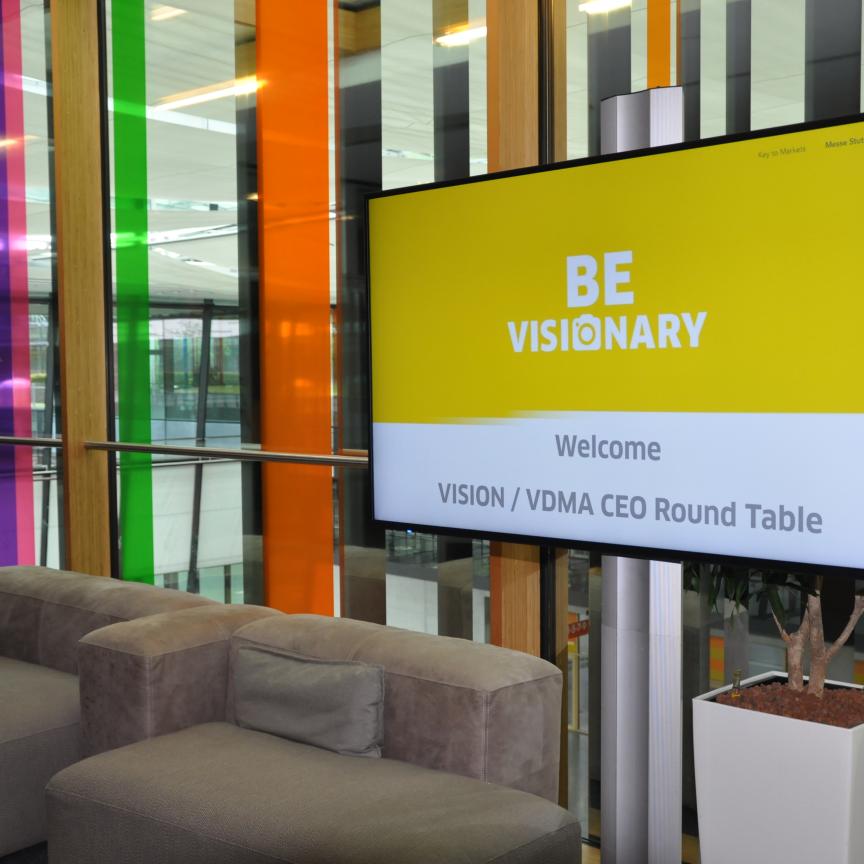The factories of the future are predicted to be highly automated affairs, relying on data from lots of sensors and vast computing resources to analyse and make sense of it all. Machine vision is one type of sensor that would play a role in these smart factories, but while vision is a key automation tool, it is still relatively unyielding when it comes to variation in production environments.
On 1 June 2015, MVTec Software will release its Merlic software platform for building machine vision applications without programming. The package joins the likes of Matrox Design Assistant from Matrox Imaging and Teledyne Dalsa’s iNspect and Sherlock programs, all of which are designed to make a machine vision application easy to create without any coding.
‘Thanks to its intuitive usability, Merlic facilitates much faster implementation of applications that used to have to be developed with a great deal of effort,’ commented Thorsten Daus, product manager for Merlic at MVTec Software. ‘It is not so much a matter of handling additional or entirely new tasks, but rather the way in which they are handled, especially with respect to efficiency and work acceleration.’
It’s this programming effort needed to create a machine vision application that can make vision inflexible, especially when it comes to short production cycles and changing parts – coding for multiple inspection procedures can be time consuming and costly. And it’s just these sorts of automated manufacturing lines that machine vision will have to handle in the factories of the future.
Daus said: ‘Today, machine vision is not commonly used in several flexible production processes or when dealing with frequently changing, low-volume workpieces, because the cost of development and constant adaptation is simply too high. However, these areas are the future of industrial manufacturing.’
This is just one area that would benefit from more intuitive vision software, but there are many other non-industrial applications that would also gain – Daus listed service robotics, autonomous vehicles and agricultural technology, as three potential areas.
A lot of work is going into making machine vision software for the non-expert user. Ben Dawson at Teledyne Dalsa commented that ‘most of our software effort is in making machine vision software easier to use for the non-programmer’.
Teledyne Dalsa’s iNspect software has a graphical user interface where users drag-and-drop ‘tools’, such as callipers, onto an image to build an application quickly. The company’s Sherlock software also has a graphical programming interface where elements are dragged and dropped into an instruction tree.
Merlic operates in a similar manner using graphical tools to build up a vision application, while Matrox Design Assistant is an integrated development environment (IDE) where the user constructs flowcharts instead of programming.
‘Machine vision software can be seen to fall into of one of two broad categories,’ explained Pierantonio Boriero, product line manager at Matrox Imaging. ‘Firstly, the library or SDK, and, secondly, the integrated development environment where development is performed graphically and interactively.’
The former requires traditional computer programming which can be laborious and, noted Boriero, even overwhelming. ‘Developing the overall application this way, with not only the vision task but also with a user interface, automation equipment interactions, and enterprise communication can require combining several application programming interfaces from different vendors and coding some functionality from the ground up,’ he said. ‘This has led to the creation of the IDE, like Matrox Design Assistant with its flowchart-based approach, where all the aforementioned tasks are set up within the one IDE and only a basic grasp of computer programming concepts [is needed].’
As well as those with little or no programming knowledge, even vision professionals such as system integrators simply lack the time for complex programming, noted Daus, and extensive programming would only make their solutions more expensive. A plant engineer, for example, can justify using machine vision at more places in the manufacturing process when it is quick and easy to apply.
‘Today’s intuitive machine vision software addresses well-defined applications, such as measuring part diameters, detecting certain flaws, and reading barcodes. As we wrap more machine vision-specific knowledge into easy-to-use interfaces, users will be able to do more complex applications,’ Dawson said.
‘I expect more domain knowledge will be incorporated into machine vision software, enabling users to solve ever more complex vision problems,’ he continued. ‘Presenting this “expert system” in a simple user interface is important, but a major challenge. For example, we know what scratch defects look like but how do you incorporate the knowledge of what scratches look like in the machine, and how would users interact with the machine to apply that knowledge? The ideal interface would be similar to instructing a human worker on what measures to take, what defects to note, etc. and having the machine vision system generalise the instructions to make a solution.’
In order to broaden the use of industrial imaging, one important aspect is the development of standards that allow programmable logic controller (PLC) and machine vision technology to integrate, Daus commented. Many machine vision software development tools cover only the vision part and do not support the user with a PLC or the creation of a front-end for the operator on the factory floor. ‘Developing a machine vision application often requires using and becoming familiar with several different tools,’ he said. ‘An all-in-one approach is more efficient, for example, by enabling the development of front-end GUIs and a seamless PLC integration within one single tool.’
Advances in hardware, miniaturisation and mobile devices will all be part of the factories of the future, Daus believes, and the ability of engineers to make the most of vision software tools without having to write complicated code will advance automation solutions.
‘As machine vision software gets smarter and easier to use, it makes automating manufacturing tasks such as quality control, robot guidance, and track-and-trace easier,’ commented Teledyne Dalsa’s Dawson. ‘More importantly, it reduces the cost and risk compared with programming custom machine vision software.’
 Greg Blackman is the editor for Electro Optics, Imaging & Machine Vision Europe, and Laser Systems Europe.
Greg Blackman is the editor for Electro Optics, Imaging & Machine Vision Europe, and Laser Systems Europe.
You can contact him at greg.blackman@europascience.com or on +44 (0) 1223 275 472.
Find us on Twitter at @ElectroOptics, @IMVEurope, and @LaserSystemsMag.


